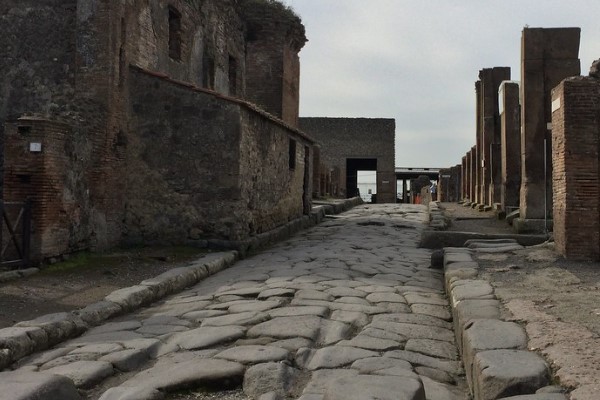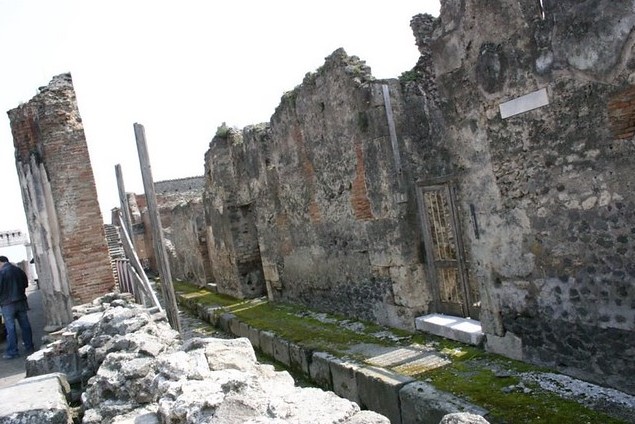The Best Spots in Pompeii
See how the ancient people of Pompeii lived by seeing all the greatest artefacts leftover!

Pompeii, Italy
Pompeii is truly an unforgettable sight to see in person, once being the home to the ancient Romans. The entire city is ruins, with each building and artefact found here thousands of years old! Discover all the best spots to see in this glorious tourist spot!
The Amphitheatre
Pompeii was once a thriving city, known as one of the wealthiest trading regions of the Roman Empire. Rich foods, fashion, and jewels were plentiful here, with many Romans using this as their summer vacation spot. Due to its popularity, the city created a fabulous amphitheatre, which held over 12,000 spectators in its prime. Hosting a range of games including gladiatorial tournaments, animal fights, and more! The Amphitheatre was built-in 80 BC, making it is one of the oldest buildings in existence today. The structure was carved into the ground, so it does not feature the underground networks like the colosseum, but the size and preservation of the amphitheatre will leave you in awe!
The House of the Vetti
The House of the Vetti is one of the best examples of a typical Roman mansion back in ancient times. Being a extremely well preserved home, with the main attraction being the series of frescoes displayed on the inside walls. These frescos have remained bright in colour, a striking red that is extremely stunning to see in person. Learn about the history and discover who the wealthy merchants who once called this spot home! allows you to see how the rich would have lived.
House of the Faun
It was once the richest residence of Pompeii, stretching out to over 30,000 square feet of space. The lavish home is worth the visit for its mosaics alone, with some so beautiful they have been moved to the National Museum of Naples. The House of the Faun was named after the statue of the dancing faun found in the house. Back in ancient times, Fauns were seen as creatures that symbolise wildness, vitality, and sexuality, with the statue most likely displayed to bestow these traits onto the household.
The Lupanar
One of the most unusual features of Pompeii was the overwhelming number of Brothels hidden about. Back then, it was a common occurrence for men to stop into these brothels for a quick visit, with the taboo much less apparent. Lupanar was the largest of all the brothels, and it can still be seen today! Erotic frescoes cover the inside walls, displaying intimate moments which historians believed acted as a certain ‘menu’ for visitors. However, the rooms of this ancient building show the dark side of the Brothels of Pompeii, with the small rooms with no windows and rock beds showcasing the hard and cramped lifestyle the women, who were typically salves, endured.
The Forum
Back in the day, this was the main centre for political, cultural and religious activities in Pompeii. It was the central square, bordered by buildings, shrines, and temples. Politicians would routinely discuss town matters in this centre, and markets popped up here on sertain days bringing in traders and tourists alike.
Temple of Apollo
The Temple of Apollo was known as the city’s most important religious building. It was built in the 6th century, with the temple surrounded by columns, statues, and stunning garden structures. Nowadays, it has crumbled quite significantly, but visitors can still easily imagine its grandeur back in its prime time.
The Antiquarium
Once you have strolled the crumbling streets of Pompeii, why not head to the museum to see the artefacts found over the many years of exploration. Housing many of the artefacts uncovered, with incredibly well-preserved furniture, artwork, and personal belongings. There are even the casts of the victims, which is a poignant feature for anyone visiting Pompeii. Created when historians preserved the remains of skeletons found in Pompeii with liquid plaster. The shocking casts display the last moments of these beings, with some cradled up in a ball, or others grasping their loved ones.
Related article: The Rediscovery of Pompeii
Recommended Pompeii Tours: Pompeii Tour from Rome
Price: €120
Company: Sightseeing Tours Italy
This post was originally posted on https://sightseeingtoursitaly.wordpress.com/2020/06/02/the-best-spots-in-pompeii/


